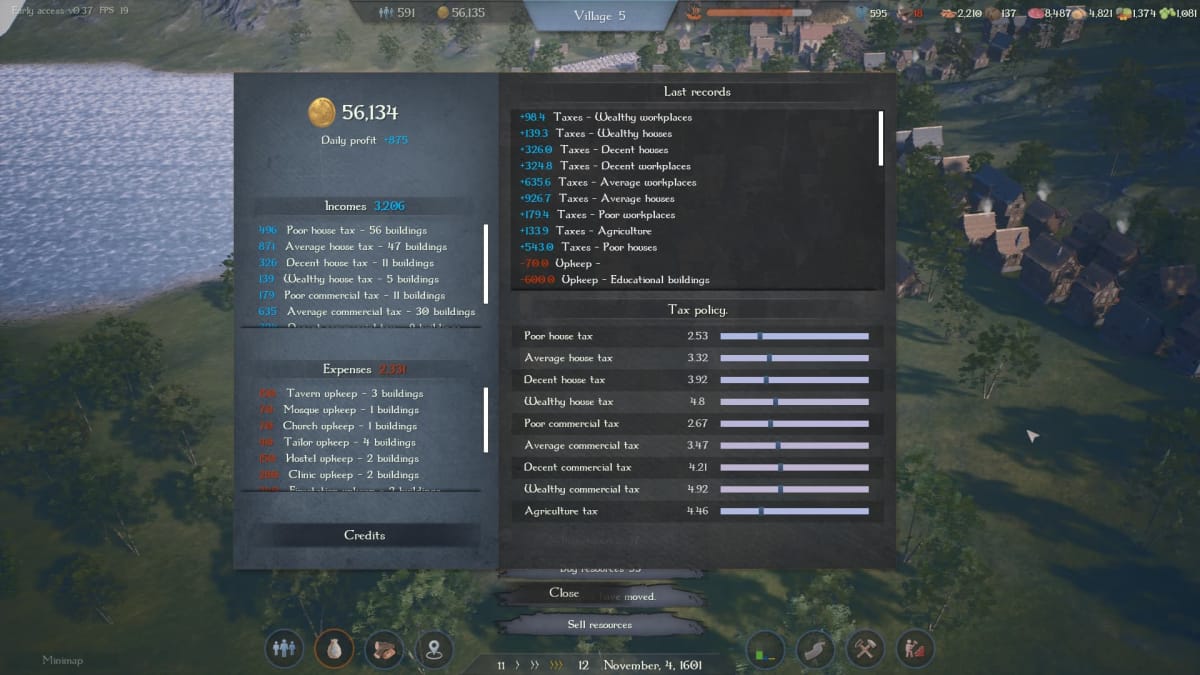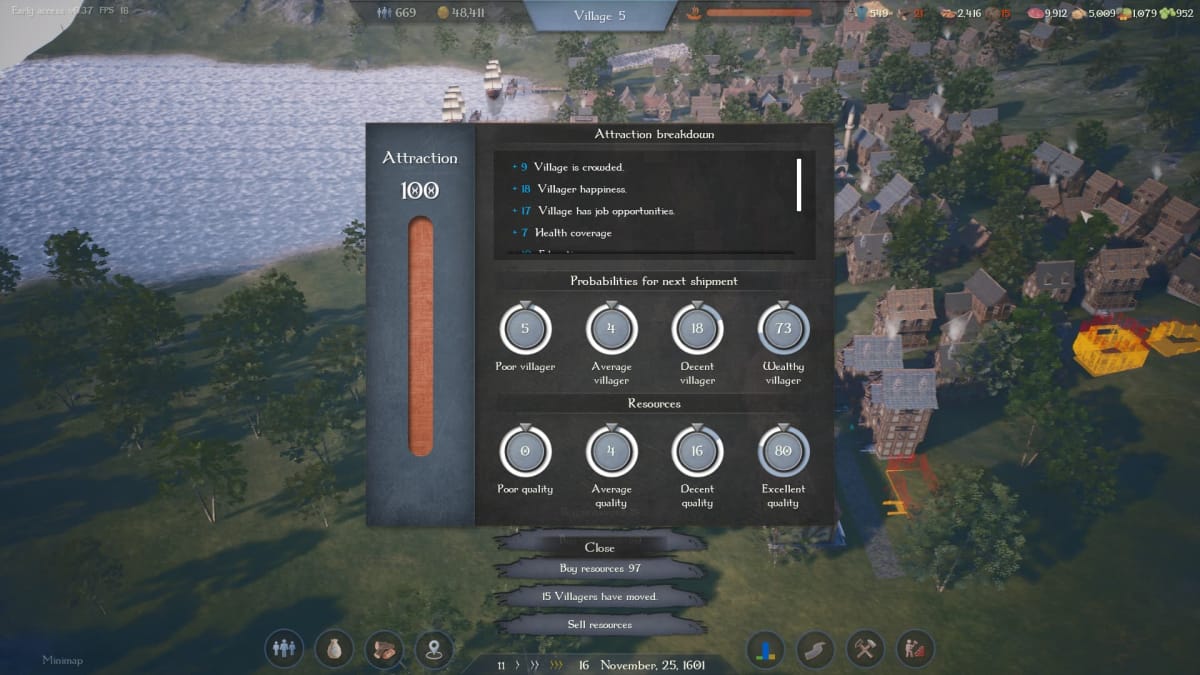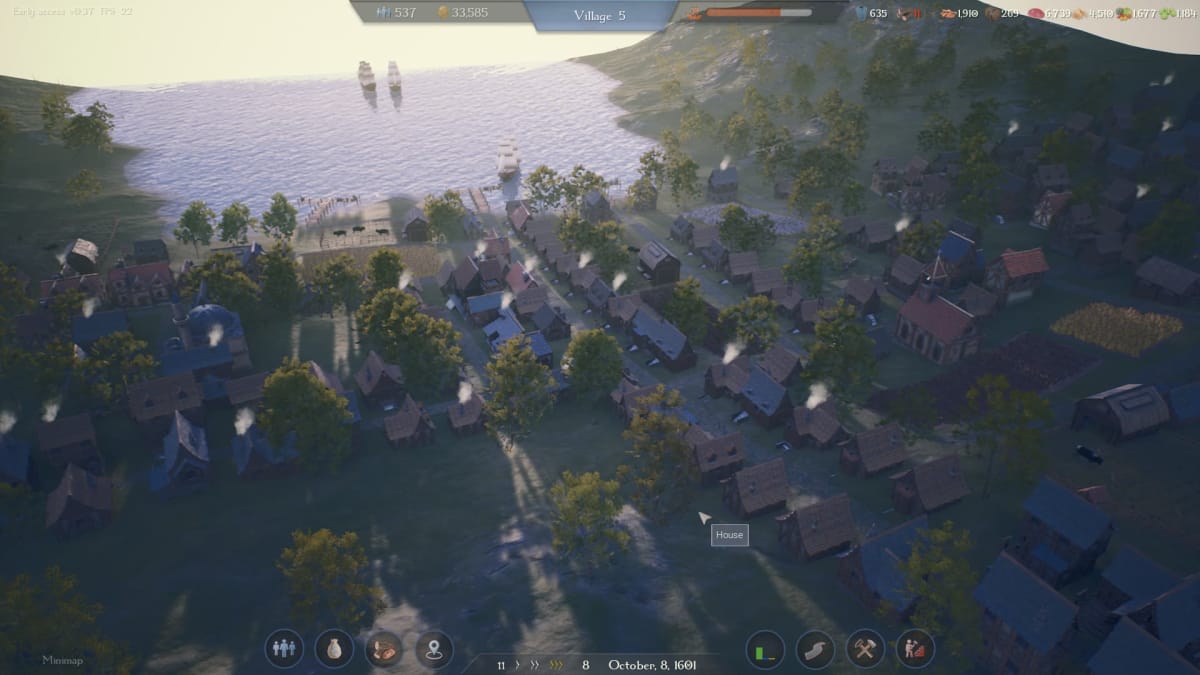New Home: Medieval Village is as much about building a nice-looking town as it is managing multiple systems. You need to manage money, happiness, housing demand, job demand, and town attractiveness if you want to succeed. While this may seem like a lot, many of these systems go hand in hand with each other to help the game flow smoothly. The guide below is here to help you create a perfectly managed town that will be making a profit in no time.
How to Spend Your Money and Manage Your Town
You don't start off with anything other than money when you start the game. You will need to build a boat dock, zone some houses, and zone a workplace to get your villagers flowing in. You will also want to take things slow and avoid any excessive spending.
Here's what to keep in mind when trying to manage your money:
- Every specialty building you place down has a daily upkeep cost, including wells.
- You can get buy without making your town happy; there's no need to splurge on schools or taverns right away.
- Creating small neighborhoods around wells and jobs helps to keep things together when you're starting out.
- After building your first few houses, get a farm started ASAP to begin the path to a self-sustaining village.
- High taxes help at the beginning but aren't great for the long haul.
Go ahead and buy your first batch of supplies when your first ship comes in, but from there on out, only use ships for emergency purchases and to sell your excess items. You can use crop fields to get vegetables, spices, and wheat. For meat, you can have a cattle farm, and you can build an orchard for fruit. If you need clothing, build a tailor and make sure to have a woodcutter before winter as your townsfolk will need to keep warm.
In order to keep increasing your profits, you need to grow your town. This means checking your zoning tab regularly to see if anyone's waiting on work or a home. If this queue builds up, then the ship will stop bringing in new residents. Keep a small number of houses ready to zone and a careful eye on workplaces to see when they fill up. As you progress through time and grow your village, you will notice that the percentage of wealth classes will change.
You can demolish buildings if you mess up, and they begin to lose you too much money. This doesn't mean that you will get your money back used to build it, though, so it's not a system that you should heavily rely on.

How to Manage New Home: Medieval Village Attractiveness
To get wealthier villagers to move in and to ultimately make more money, you need to have an attractive village. This is pretty easily done once you learn that happiness and access to certain special buildings go hand in hand. The happier your villagers, the more your attractiveness meter will go up, the better coverage you have for things like education, the happier your village will be.
Here's how to keep villager's happy:
- Keep taxes low; having the tax bar slightly below the middle point is best.
- Make sure that there are always enough houses and jobs to go around.
- Center your neighborhoods around schools, clinics, fire stations, and police stations so that they benefit your residents.
- Invest in a cellar and then a tavern to gain easy favor with villagers.
- The religious buildings also help to raise your town's attractiveness.
By concentrating on housing and work, you will naturally start to make more and more of a profit. When you have a bit of excess money, build a specialty building in the center of your neighborhood. Repeat this process until each neighborhood you build is fully covered in order to max out attractiveness.
Once you hit around 25 attractiveness, you will see average wealth villagers come in, around 50 you decent villagers, and around 75 attractiveness you will see wealthy villagers. Since these villagers have more money, they will need to pay higher taxes. Once you get to the point of having decent villagers, you can really start expanding your town, as you should be pulling in a decent profit each day. This is a good time to speed up your game since your village should be providing its own resources and won't need you to buy anything off of the boats.
Once you see that the percentage for getting a wealth class is going up, then you should zone out a few starter homes and a starter workplace. This way, these villagers can smoothly transition into your town for the first time without you having to constantly worry about getting them on the next boat. Typically a 25% chance of getting the next wealth class is a good enough reason to go ahead and prep as you will receive your first new villager from this class within four boats.

That's it for our tips to manage your New Home: Medieval Village effectively!
Have a tip, or want to point out something we missed? Leave a Comment or e-mail us at tips@techraptor.net










